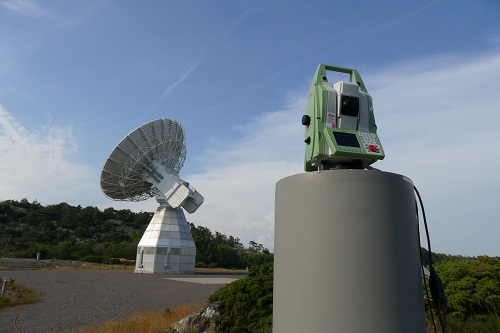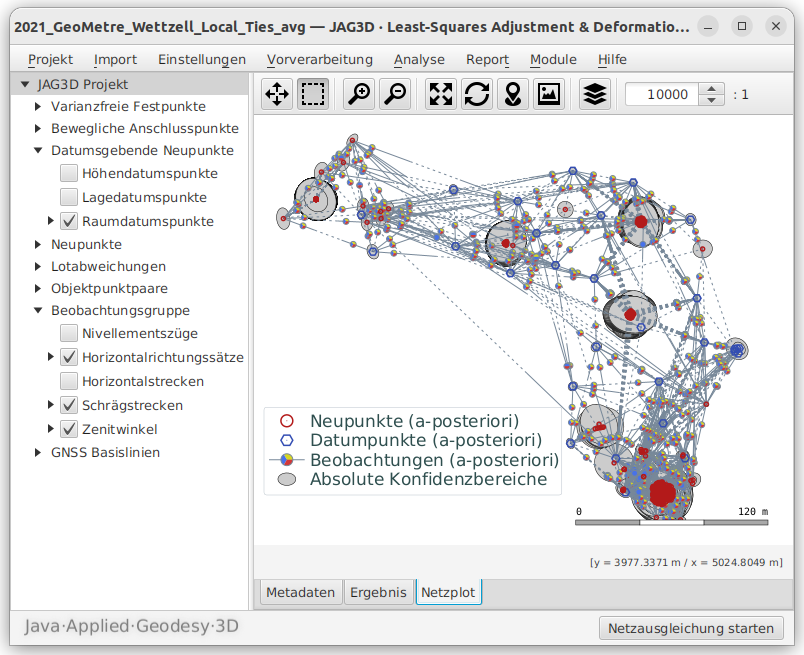Global Geodetic Reference Frame
The global geodetic reference system is defined as an Earth-fixed Cartesian coordinate system. The origin is the centre of mass. The X-axis points towards the Greenwich prime meridian. The mean axis of Earth rotation corresponds to the Z-axis. The Y-axis is perpendicular to the X- and Z-axis. The resulting frame is a so-called right-handed frame. Combining the measurements of several space geodetic techniques such as Very Long Baseline Interferometry (VLBI), Satellite/Lunar Laser Ranging (SLR/LLR), Doppler Orbitography and Radiopositioning Integrated by Satellite (DORIS), and Global Navigation Satellite Systems (GNSS) realizes the global geodetic reference system.

To obtain a reliable and robust frame, so-called local ties are required. Local ties are derived at multi-technique stations, also known as fundamental stations, and result from high precise terrestrial measurements. Multi-technique stations are national research facilities hosting at least two different space geodetic techniques at the station’s site. The local ties derived at these stations provide the important geometric relation, i. e., the relative position and orientation of the operated space geodetic techniques. The aimed accuracy goal for upcoming global geodetic reference frames is 1 mm in position on a global scale. For that reason, the accuracy requirement for local ties is quite large because local ties are a crucial component within the combination process.
